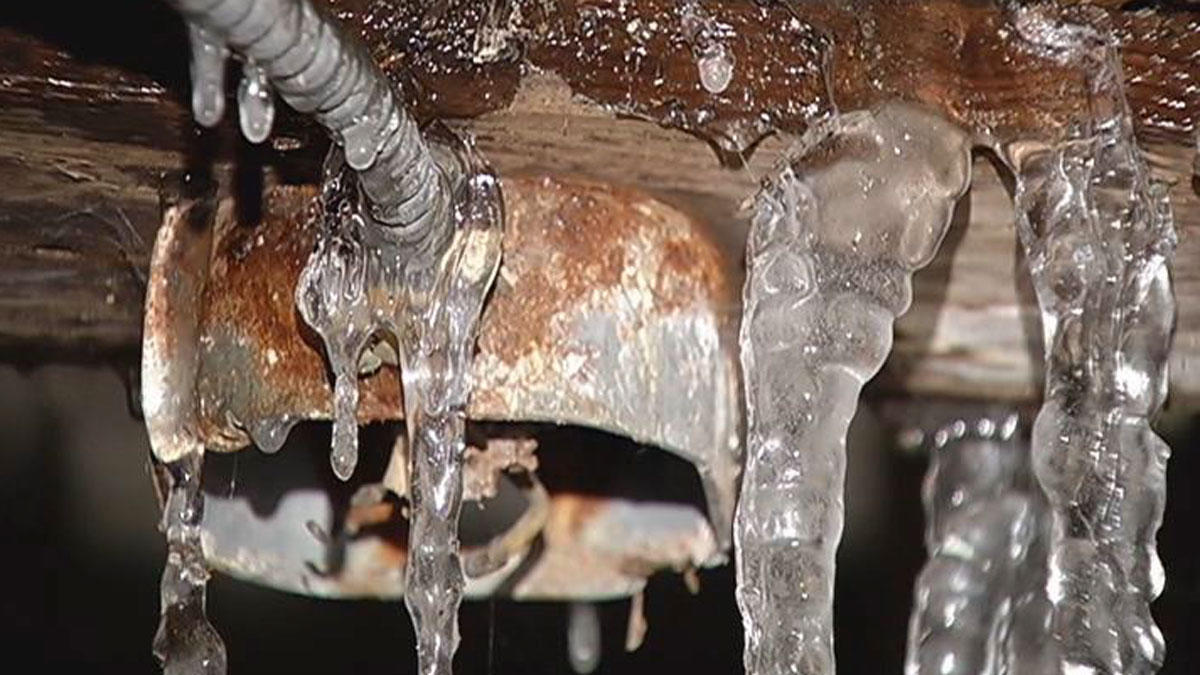Tips to Prevent Frozen Pipes in Winter: Pro Advice
Tips to Prevent Frozen Pipes in Winter: Pro Advice
Blog Article
The article author is making several great pointers related to How to Prevent Your Pipes From Freezing as a whole in this great article below.

Cold weather can ruin your pipes, specifically by freezing pipes. Right here's just how to avoid it from taking place and what to do if it does.
Introduction
As temperatures drop, the risk of frozen pipelines rises, possibly leading to expensive repair services and water damages. Understanding how to prevent frozen pipes is essential for property owners in cold environments.
Avoidance Tips
Shielding prone pipelines
Wrap pipelines in insulation sleeves or utilize warm tape to safeguard them from freezing temperatures. Concentrate on pipes in unheated or exterior locations of the home.
Heating techniques
Maintain interior areas sufficiently warmed, especially locations with plumbing. Open up closet doors to enable cozy air to circulate around pipes under sinks.
Just how to recognize frozen pipes
Try to find decreased water flow from taps, uncommon odors or sounds from pipelines, and visible frost on revealed pipes.
Long-Term Solutions
Architectural modifications
Take into consideration rerouting pipelines far from exterior wall surfaces or unheated locations. Include added insulation to attic rooms, cellars, and crawl spaces.
Upgrading insulation
Buy top quality insulation for pipelines, attics, and walls. Proper insulation helps keep regular temperatures and minimizes the risk of frozen pipelines.
Safeguarding Exterior Pipes
Yard tubes and outside taps
Detach and drain yard hose pipes prior to winter months. Set up frost-proof spigots or cover exterior taps with protected caps.
Recognizing Icy Pipelines
What creates pipelines to freeze?
Pipelines ice up when subjected to temperature levels below 32 ° F (0 ° C) for prolonged durations. As water inside the pipelines freezes, it expands, taxing the pipeline wall surfaces and possibly creating them to burst.
Risks and damages
Frozen pipes can cause water supply disruptions, building damage, and costly repair services. Burst pipes can flood homes and cause extensive structural damages.
Indicators of Frozen Water Lines
Identifying icy pipelines early can prevent them from rupturing.
What to Do If Your Pipelines Freeze
Immediate actions to take
If you suspect frozen pipelines, keep faucets open up to soothe stress as the ice melts. Use a hairdryer or towels taken in hot water to thaw pipelines slowly.
Conclusion
Protecting against frozen pipelines needs proactive steps and fast reactions. By recognizing the causes, indicators, and preventive measures, house owners can protect their plumbing throughout cold weather.
6 Proven Ways to Prevent Frozen Pipes and Protect Your Home
Disconnect and Drain Garden Hoses
Before winter arrives, start by disconnecting your garden hoses and draining any remaining water. Close the shut-off valves that supply outdoor hose bibs and leave the outdoor faucet open to allow any residual water to drain. For extra protection, consider using faucet covers throughout the colder months. It’s also important to drain water from any sprinkler supply lines following the manufacturer’s directions.
Insulate Exposed Pipes
Insulating your pipes is an effective way to prevent freezing. Pipe insulation is readily available at home improvement stores and is relatively inexpensive. Pay close attention to pipes in unheated areas such as the attic, basement, crawl spaces, or garage. Apply foam insulation generously to create a buffer against the cold. You can also wrap your pipes in heat tape or thermostat-controlled heat cables for added warmth.
Seal Air Leaks
Inspect your home for any cracks or openings that could let in cold air. Seal any holes around the piping in interior or exterior walls, as well as the sill plates where your home rests on its foundation. Additionally, make sure to keep your garage door closed unless you’re entering or exiting. Leaving it open creates a significant air leak that can lead to frozen pipes.
Allow Warm Air Circulation
During cold snaps, it’s essential to allow warm air to circulate evenly throughout your home. Leave interior doors ajar to promote better airflow. Open kitchen and bathroom cabinets to help distribute heat consistently around the rooms. If you have small children or pets, be sure to remove any household chemicals or potentially harmful cleaners from open cabinets for safety.
Let Faucets Drip
A small trickle of water can make a big difference in preventing ice formation inside your pipes. When temperatures drop significantly, start a drip of water from all faucets served by exposed pipes. This continuous flow helps prevent the water from freezing. Additionally, running a few faucets slightly can relieve pressure inside the pipes, reducing the chances of a rupture if the water inside does freeze.
https://choateshvac.com/6-proven-ways-to-prevent-frozen-pipes-and-protect-your-home/

We were shown that report on How to prepare your home plumbing for winter weather through a buddy on a different domain. For those who enjoyed our post kindly consider to share it. Thanks a lot for your time. Revisit us soon.
Information Here Report this page